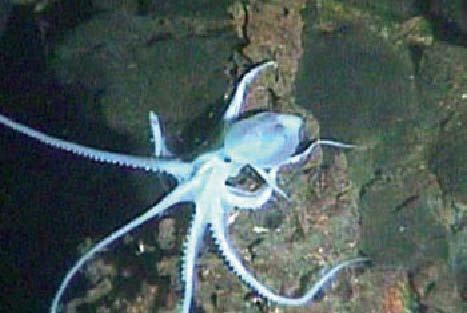Genus Vulcanoctopus Rank Species | Family Octopodidae Order Octopus | |
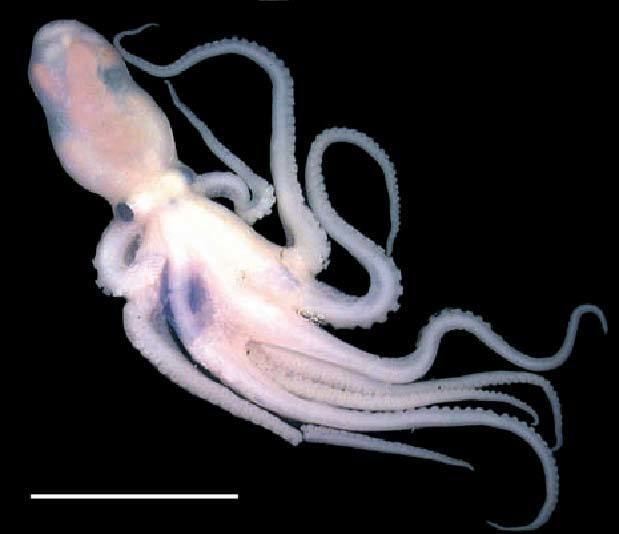 | ||
Scientific name Vulcanoctopus hydrothermalis Similar Octopus, Benthoctopus, Bathypolypus, Graneledone, Scaeurgus | ||
Vulcanoctopus hydrothermalis is a small benthic octopus endemic to hydrothermal vents.
Contents
It is the only known species of the genus Vulcanoctopus.
Habitat
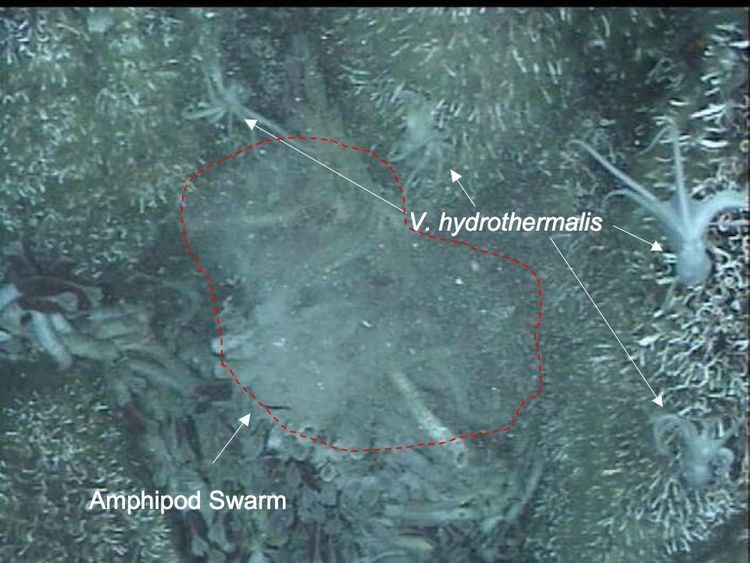
Vulcanoctopus hydrothermalis lives along the East Pacific Rise, the border of the Pacific, Cocos, and Nazca Plates. It is often found near colonies of giant tube worms.
Description
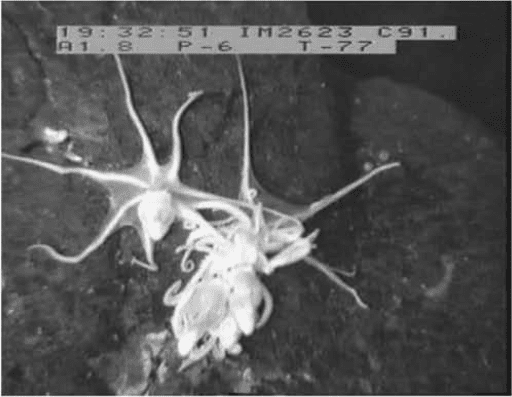
The morphology of V. hydrothermalis shows some unusual traits for an octopus, due to adaptations selected for in the deep sea, such as the lack of an ink sac. Its dorsal arms are longer than the ventral arms. These feature biserial suckers. Overall, it has a mean total length of 184 mm (7.2 in).
Behavior
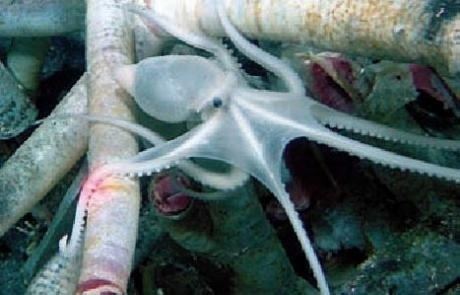
The ratio of recovered individuals is skewed towards males, indicating fewer females or spatial segregation by sex. Its primary defense reaction is to freeze in place, then if needed, the secondary defense involves pushing away from the bottom then drifting back down. V. hydrothermalis uses its front arms (I dorsal and II dorsolateral) for feeling its way around and detecting and catching prey, while the back arms (III ventrolateral and IV ventral) support its weight and move the octopus forward. This species has not been observed to use jet propulsion.
Prey

Its confirmed prey consist of the amphipod Halice hesmonectes and crabs, which are thought to be one of their primary food sources.

